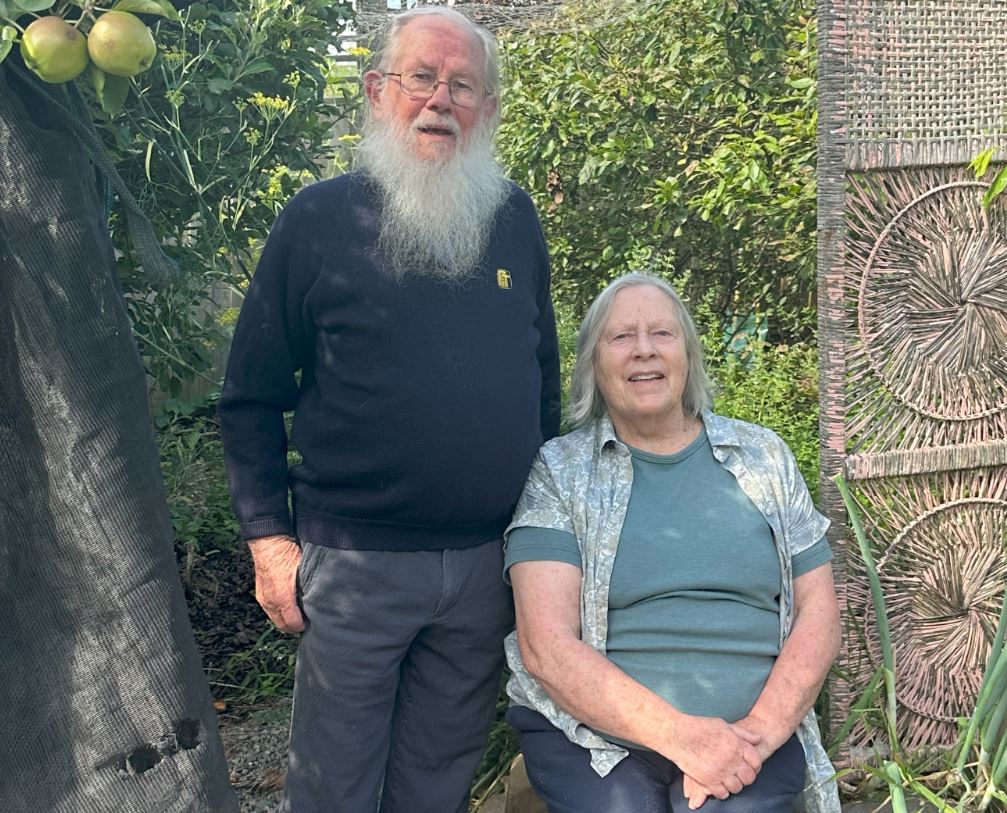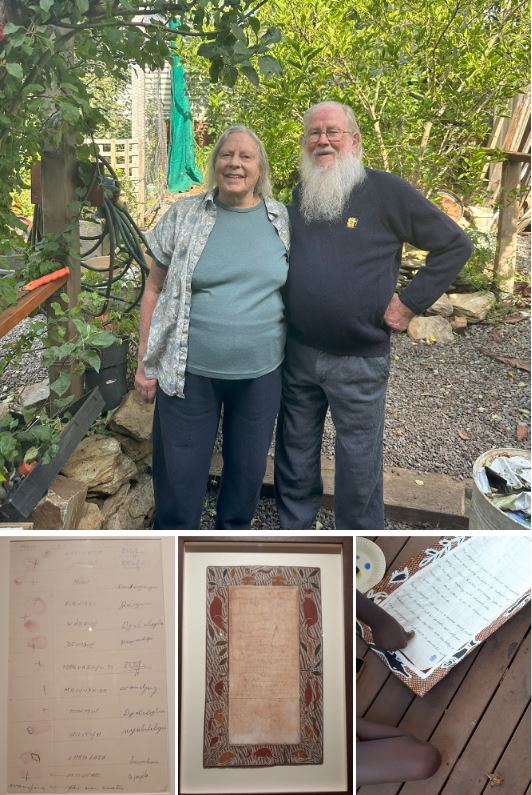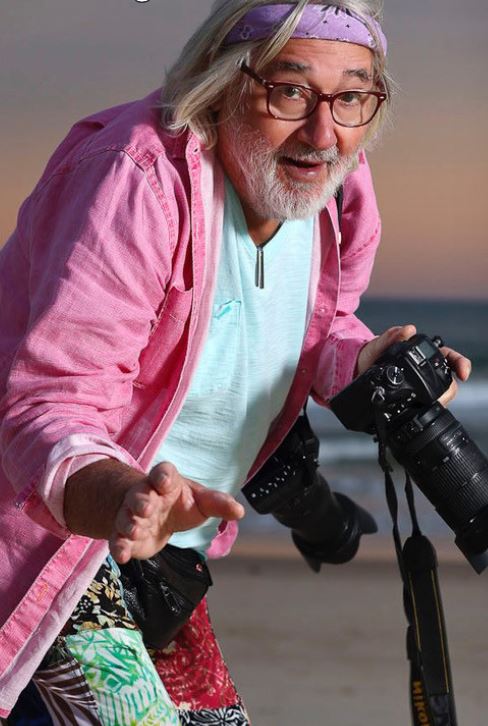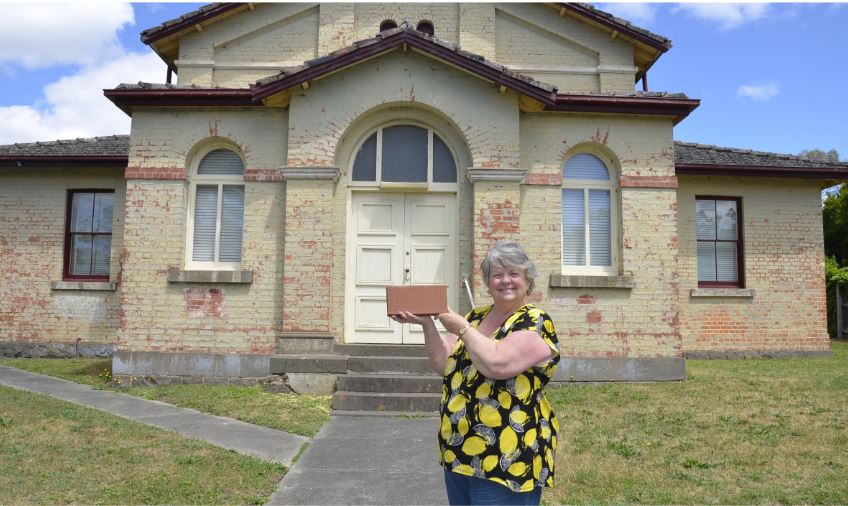January 18th, 2024Teaching the next generation: Returning the Fourth Bark Petition to Country

Words: Ruth Bray
In 1962 my husband Malcolm Bray went to Yirrkala Mission in Northern Territory to work as a mechanic. I joined him three years later. We learnt the local Aboriginal language, and would often go to listen to the singing, the didgeridoo and the clapsticks in the evenings, and loved going out on Country with the Yolngu people.
We were thrilled when we received an invitation to a Bungul, or ceremony celebrating the return of the Fourth Bark Petition to Yirrkala in the first week of December. As Malcolm was unable to travel, our grandson Keaton from Hepburn, and I travelled to Yirrkala.
Yirrkala Bark Petition was the first formal petition presented to the Australian Parliament on Aboriginal Land Rights, and is considered a significant turning point in the recognition of Indigenous Rights in Australian history.
As a result a Select Committee on Grievances of the Yirrkala Aborigines, Arnhem Land Reserve, was
established. This was followed by the 1976 Land Rights Act, and eventually the Mabo ruling.
During this year, children from the local schools at Yirrkala, Nhulunbuy and Gunyangara attended workshops, learning the history of the Bark Petitions. They were told how when the government, without consultation with the Yolngu or the mission, permitted mining exploration at Yirrkala, Aboriginal Elders from the 13 clans sent a petition to the Australian Parliament concerning land rights, attached to bark paintings.
In 1963, there were four Bark Petitions. Two representing the different moieties of the Yirrkala clans are now on display in Parliament House and one is in the National Museum in Canberra. The fourth was recently discovered in Derby, Western Australia by Professor Clare Wright of La Trobe University and was returned home to the Buku-Larrnggay Mulka Centre at Yirrkala.
On the morning of the Bungul, Keaton and I accompanied Aboriginal Elder, Witiyana Marika and Professor Clare Wright, as the students were taken to each place of significance, in the preparation of the petitions.
In the church Clare told the students how in the 1960s, at the request of Rev Edgar Wells, local elders had painted two large significant bark paintings. These stood in the front of the church, and told their important traditional stories. I remember seeing them each time I was seated in church. These large bark paintings are now in the Buku-Larrngay Mulka Centre.
When MP Kim Beazley senior, was brought to Yirrkala by activist Stan Davey in response to the Elder’s concerns, and saw the magnificent bark paintings in the church, he suggested that the Elder’s petition should be attached to bark paintings.
Then we followed the schoolchildren up to a shady tree on the cliff top, beside what was the site of the old Mission House. The story of the night the Elders painted the barks under that tree was told. My husband Malcolm was there that night and recollects watching the elders as they painted the barks.
To celebrate the return of the petition, some weeks previously, each school collected ochre, cut a bark, and painted it. Like their elders before them, they wrote and fixed petitions to their bark paintings. Their petitions included modern problems with children not attending school and the need for better roads.
The children learnt how mission staff, mainly the wives, carefully translated the words of the Elders into English. Ann Wells, wife of the Superintendent Edgar Wells, typed 12 copies of the petition in both Yolngu language and English.
One key on her typewriter had been altered to type the tailed n, common in Yolgnu language. This
typewriter has been donated to the Buku-Larrngay Mulka Centre.
The students were then taken to the place where the Elders gathered to sign the petition. We heard how as the copies were passed around, each Elder made his thumb print, which was witnessed by younger literate members of the Yolngu community who then signed the petition.
After visiting these places and hearing these stories, the students then returned to the shade outside the Buku-Larrngay Mulka Centre and gathered around their own bark petitions, and added their thumb-prints.
Later that day, women in red, carrying long digging sticks, were seen singing and dancing towards the centre, accompanied by a replica of the fragile Fourth Bark Petition.
It seemed to me that the original Djankawa sisters from the old stories, who arrived with their digging sticks and occupied the land way back in history were bringing the claim for land rights.
After speeches from the different Yirrkala clans, the replica petition was slowly danced into the centre by the men, with the clapsticks echoing, and the sounds of the singing. It was powerful.
The replica disappeared and the petition, already hanging on the wall, was suddenly unveiled. The clapsticks went on and on and on, with the men standing there in front of the petition singing and singing and singing, louder and louder. When they eventually stopped, the Fourth Bark Petition was home.
Professor Wright has not only researched the Bark Petitions, discovered the lost petition, facilitating its safe return to country, but she and Elder Witiyana Marika have taught and encouraged the younger generation at Yirrkala to learn about the importance of the Yirrkala Bark Petition.

thumbprints and signatures on the Bark Petition, the Fourth Bark Petition, the Student Petition. Images: Ruth Bray..










